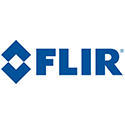TSP #186 - Tabor Electronics 4-Channel 12GHz RF Signal Generator Review, Teardown & Experiments
13.8K views
April 9, 2021 11:55 PM
In this episode Shahriar reviews the Lucid Series synthesizers from Tabor Electronics. These instruments are offered in several attractive formfactors. Furthermore, the multi-channel instrument (4-Channels and up to 12GHz) provides independent but coherently locked channels. The synthesizers also offer excellent signal purity, harmonic response and phase noise.
You can find more information about the Lucid Series Signal Generators from Tabor Electronics here:
https://distribution.taborelec.com/signal-generators/
http://www.TheSignalPath.com
http://www.YouTube.com/TheSignalPath
http://www.Patreon.com/TheSignalPath
TNP #4 - Keysight Turbo Encabulator Review & Teardown
13.3K views
March 30, 2021 12:17 PM
In this episode Shahriar reviews the extraordinary new engineering from Keysight. Unfortunately, mere written words cannot do this instrument justice.
See the all the new Keysight Turbo Encabulator here:
https://youtu.be/fltOyddlnOE
http://www.TheSignalPath.com
http://www.YouTube.com/TheSignalPath
http://www.Patreon.com/TheSignalPath
TSP #185 - ITECH IT9121 Digital Power Meter (600V, 20A) Review, Teardown and Experiments
14.9K views
March 15, 2021 11:39 AM
In this episode Shahriar reviews the ITECH IT9121 Digital Power Meter. The IT9100 power meter series can provide up to 1000Vrms and 50Arms and measurement bandwidth of 100KHz. The instruments can measure voltage, current, power, frequency, harmonics and other parameters. The standard configuration includes USB, GPIB, RS232 and LAN communication interfaces and also interfaces for USB-based peripheral devices. The basic voltage and current accuracy is 0.1%.
https://www.itechate.com/en/product/power-meter/IT9100.html
This review is organized as follows:
00:00 – Introduction, interfaces, front & back panel
03:37 – IT-E185 AC Interface accessory overview
05:01 – Complete teardown, architecture analysis, mixed-signal design
15:46 – GUI overview, measurement capabilities, analysis types
18:03 – Included interface cables, DC accuracy and capability measurements
20:45 – AC measurements, PF, S, THD, Phase, Frequency measurements
26:45 – Characterization of an Anker USB-C 60W chargers and USB-C battery pack
33:13 – Characterization of an LED light bulb with external Triac dimmer circuit
36:52 – PC software capabilities and overview
38:02 – Concluding remarks
http://www.TheSignalPath.com
http://www.YouTube.com/TheSignalPath
http://www.Patreon.com/TheSignalPath
TSP #184 - Keithley 2470 1kV Source Measure Unit (SMU) Review, Teardown and Experiments
21.6K views
March 7, 2021 11:35 PM
In this episode Shahriar reviews the latest addition to the Keithley Graphical SMU family. The Keithley 2470 SMU offers 1100 V and 10 fA capability and is optimized for characterizing and testing high voltage, low leakage devices, materials, and modules, such as Silicon Carbide (SiC), Gallium Nitride (GaN), power MOSFETs, transient suppression devices, circuit protection devices, power modules, batteries, etc. This review is organized as follows:
00:00 – Introduction, SMU comparison, Power Envelope
02:34 – Instrument front & back overview
06:43 – Brief teardown and internal design overview
12:29 – GUI overview, high-voltage capability & interlock function
14:45 – High-voltage leakage measurement, capacitor leakage, polarity reverse at 1000V
20:12 – Varistor characterization on two quadrants, graphing capability
26:09 – Gas discharge tube characterization, stress testing & cursor measurements
30:47 – Multidimensional sweep using Kickstart software and CMOS sub-threshold measurement
41:32 – TSP script building, programming multiple SMUs with feedback functions
46:07 – Concluding remarks
http://www.TheSignalPath.com
http://www.YouTube.com/TheSignalPath
http://www.Patreon.com/TheSignalPath
TSP #183 - Experiments & Exploration with the Amazing Vintage (1966) HP Frequency Meter Instruments
17.1K views
February 20, 2021 2:29 PM
In this episode Shahriar describes the operation of the vintage HP frequency meter devices. These instruments were designed in the mid-1960’s and offer extremely good performance. The principle operation is based on a quarter-wave tuned cavity which is mechanically adjusted with high precision. The cavity is coupled to the through line which causes a dip of about 1.5dB at resonance.
The internal structure and design challenges are presented. A frequency meter is then used to measure a single tone and two-tone signal with impressive accuracy. The scaler transmission response of the frequency meter is also presented.
http://www.TheSignalPath.com
http://www.YouTube.com/TheSignalPath
http://www.Patreon.com/TheSignalPath









